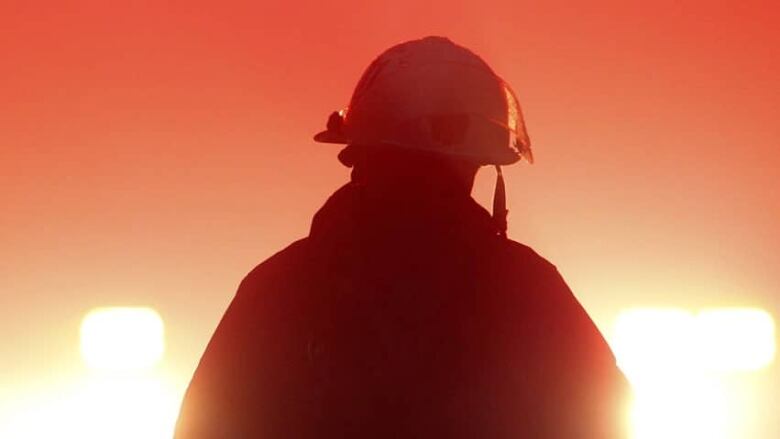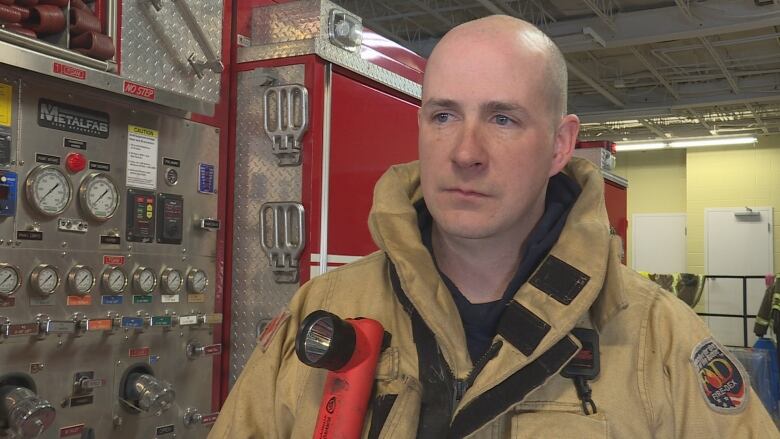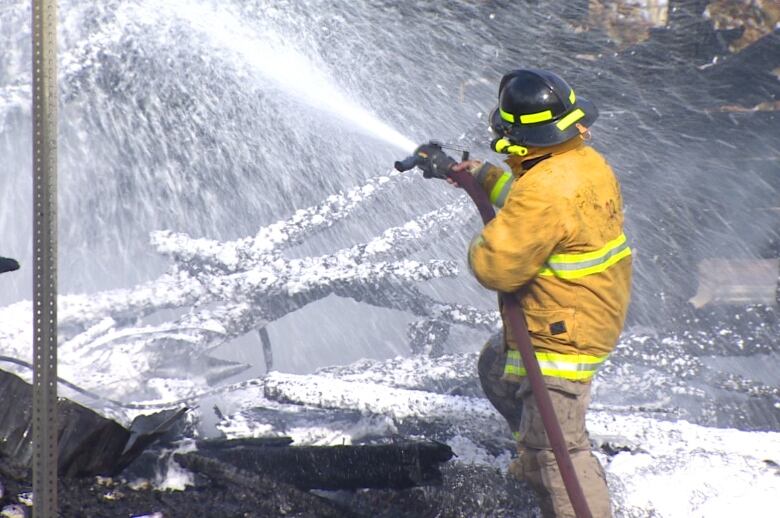5 challenges of fighting fires in the winter on P.E.I.
Snow and wind can accelerate damage

Winter weather makes it challenging to get around, and it makes it even harder for crews when they're fighting fires. Here are five challengesfirefighters face while battling blazes in the winter.
1. Difficulty travelling
Firedepartments prepare for weather getting in the way of travel by keeping a storm crew a group of volunteers who stay at the station so they can respond right away. In normal conditions, volunteer firefighters travel from wherever they are.
"We had a call last Saturday night where the weather conditions were deteriorating quote rapidly. There wereno plows out on the road. Visibility was getting poor but in some cases we have the ability to call Highways, they'll send a plow out and escort us to an emergency situation," said AnsonGrant, chief of theNorth River Fire Department.
2. Limited space
Space can be tight at a scene with snow banks in the way and there are usually nohydrants in rural areas either, so crews usehundreds of meters of hose to takewater from trucks on the road to one at the scene.

"The other night we had a farm that was set back quite a piece off the road with a very small yard. A very steep hill down in to the yard and back up so it was narrow. There was a lot of snow. A lot of ice," said Grant.
Grant reminds people to stay away from a scene if a crew is already there so itcan have space to work and move the large fire trucks. You should also make sure two pathways are cleared toyour house so you can get out and help can get in.
3. Freezing water
Apump on the truckkeeps water moving so it doesn't freeze.Water doesfreeze on to gear so firefighters warm up in the truckso ice can be broken off or melt.Fresh gear is also brought to the scene so they can change.

"The firefighters are getting wet and building up with ice that becomes a bit of a challenge too because mobility becomes an issue and extra weight so fatigue can happen quite easily as well," said Grant.
4. Slippery conditions
Firefighters are often dealing with icy conditions andsometimes have to walk in waist deep snow dragging equipment so they have to dress in layers and have good footwear.

"Not all the water turns to steam. But it turns to ice or whatever and it can be challenging too. Slippery under foot," said Grant.
5. High winds and snow canaccelerate damage
Wind can fan a fire quickly and spread it and that makes it longer to put out.
"You got to be careful of snow loads on roofs of burning buildings too that can be a hazard causing the roof to collapse more quickly because the heat from the fire is heating it up, turning it to water, snow sliding off the roof," said Grant.
- MORE P.E.I. NEWS ICanadian Tire gives O'Leary man Christmas to remember
- MORE P.E.I. NEWS I'Quite dangerous:' limit pets' time outside in cold, warns P.E.I. Humane Society












_(720p).jpg)


 OFFICIAL HD MUSIC VIDEO.jpg)
.jpg)



























































































